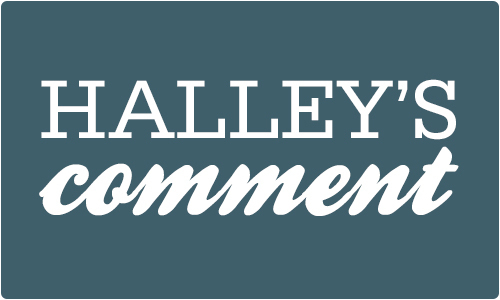Susan Scott's Blog, page 77
November 21, 2014
Fierce Resources: 5 Incredibly Easy Ways to Spread Kindness, Every Day
This week’s Fierce Resource was originally published on Huffingtonpost.com and was written by Catherine Pearson.
5 Incredibly Easy Ways to Spread Kindness, Every Day highlights simple ways to not only show kindness to others, but to show kindness to yourself. Sometimes forgiving someone for how they talked to you or apologizing for not being the best friend, colleague, or partner can be the one thing that makes your entire day better and strengthens the relationships that surround you.
How will you spread kindness throughout your week? Month? Year?
“Fortunately, research has shown that smaller acts can have serious payoffs as well, both on the giving and receiving end. Everyday kindness has been linked to everything from improved happiness to decreased inflammation in the body, as David Hamilton, author of Why Kindness Is Good For You has explained.”
The post Fierce Resources: 5 Incredibly Easy Ways to Spread Kindness, Every Day appeared first on Fierce Leadership Blog.
November 19, 2014
The Open Office: Making the Concept Work
According to the International Facility Management Association, more than 70 percent of employees work in an open office environment, yet many are dissatisfied due to a number of challenges this concept creates. From distractions and lack of privacy to the one-size-fits-all cubicle approach, there is a lot to consider when ripping out the walls in favor of sharing one space. Whether or not you have already gone this route, here are some powerful considerations for ensuring your open plan workplace is, indeed, a place that supports getting work done, not just one that looks cool.
1) Cut the cord and go untethered. One of the largest benefits of an open office is the ability to maximize space. Given the wide popularity of telecommuting, flex-hours, and more generous PTO policies, it is extremely rare that all employees are in the office, occupying the same space on a daily basis. In fact, companies with fixed desks – where an employee is permanently assigned to a particular desk – average 25 to 50 percent of unused workspace on any given day. That’s a lot of wasted space!
Due to the ever-increasing cost of real estate, it makes sense to create an untethered environment where employers can host a higher headcount in less physical space. The benefit for employees is they are then able to plug into a workstation best suited for their needs on that particular day. Which brings me to…
2) Create task-based zones. Now that you’re dealing with a wide-open space in which you are not required to plop down one workstation for each employee, you are free to create work “zones” or environments that are conducive to common tasks within your organization. Is there a need for a quiet, focused work area where folks can process information and respond? What about opportunities to collide and collaborate with other employees to generate new ideas or problem solve? How about a casual space to come together before and after meetings to ensure everyone is on the same page before running off to take action?
Herman Miller, a well-known and innovative office design organization, provides a helpful guide, “The Living Office”, that illustrates common needs so you can consider and address those that pertain to your business. Be sure to include codes of conduct for the different zones, as some may need quiet whereas others are expected to be highly collaborative and loud.
3) Maintain space for privacy. One of the biggest gripes of the open office is complete lack of privacy. So before you knock down every single wall, seriously consider leaving some up. Creating small “phone booths” that offer privacy when individuals need to make personal calls or focus on a client. It doesn’t take up much space, but covers a lot of ground in addressing employee needs.
And if you are an executive and have an assigned office with walls, consider offering it as communal workspace when you aren’t in. Invest in locking file cabinets to keep confidential material safe and open the door to guests.
The open office offers a lot of advantages for employers. It’s cost efficient, promotes collaboration and teamwork. It has the potential to afford employees a work environment that’s “just right” at the right time through hot-desking and zones. As with anything, it requires thoughtful planning. Your workplace is a delicate ecosystem that can thrive given the right conditions. So before you send in the construction crew, get with your employees and a planner to design an intentional space – one that’s open and conducive to the real needs of employees.
This blog was originally published on Business2Community.com and was written by contributing author, Halley Bock, President & CEO, Fierce, Inc.
The post The Open Office: Making the Concept Work appeared first on Fierce Leadership Blog.
November 17, 2014
Fierce Tip of the Week: Make a New Connection
In your busy week ahead, think about the many people you will interact with – on the phone, via email, in your neighborhood, and in elevators.
When you talk with them, will you ask questions and truly listen for the response? Or will you merely wait for your turn to talk?
As Susan Scott, Fierce Founder, states, “If you want to become a great leader, gain the capacity to connect with your colleagues and customers at a deep level…or lower your aim.”
We can spot from a mile away if someone is being genuine and cares.
This week’s tip is to make a new connection with someone in your life – inside or outside of the office. Schedule the time in your calendar for this effort. Make it a habit.
Some tried and true ways to connect:
- Ask-questions and really listen.
- Have a good laugh.
- Share chocolate or some other treat.
- Send a thoughtful note and follow-up.
It isn’t that complicated, yet time can slip away from us.
How will you practice connecting this week?
The post Fierce Tip of the Week: Make a New Connection appeared first on Fierce Leadership Blog.
November 14, 2014
Fierce Resources: Want to Make Your Employees Happy? Ask Them to Do Something Hard
This week’s Fierce Resource was originally published on Inc.com and written by Rebecca Borison.
What to Make Your Employees Happy? Ask Them to Do Something Hard reveals a difficult, and not so simple challenge: How do you keep your employees engaged? The answer… more complex assignments where your people are actively solving a problem. It isn’t rocket science and when they find the solution and share it, they can end the day with a sense of accomplishment.
What assignments can you delegate to your team to promote development? What will this do for morale?
“As a leader, you should look out for the following signs to determine when employees are ready for a new challenge: Everything they manage has run smoothly for a while; when they encounter a problem they quickly find a solution; they try to fix other problems at the office from different departments; and they’ve become inexplicably negative. If you notice an employee who fits this description, it’s probably time to assign them a new challenge.”
The post Fierce Resources: Want to Make Your Employees Happy? Ask Them to Do Something Hard appeared first on Fierce Leadership Blog.
November 12, 2014
Become a More Effective Leader by Using Space
“Theater is essentially a relationship between performer, spectator, and the space in which both come together.”
Gay McAuley, Honorary Professor, Department of Performance Studies, University of Sydney
If you have ever attended a concert, play or any artistic performance, you know that the stage space and how it is used is a critical component to the outcome of the act. There is a connection between how the performer(s) use the space and the overall experience for the audience members. This begs the question: Is it the same in business for any meeting or presentation? I contend the answer is yes. In fact, I believe you can even rewrite the quote above to read: “The meeting is essentially a relationship between leader, participant and the space in which both come together.”
If we believe this to be true, then space becomes one of our greatest tools as leaders. The effective use of the meeting space can support a successful outcome. It can build trust with participants, create an inclusive atmosphere, and a safe environment that allows participants to feel comfortable sharing with peers and fully engaging in the conversation.
So how can we as leaders use our meeting space most effectively? Here are a few suggestions:
1. Don’t hide from the space. For many leaders, especially those who are new to public speaking, it can be tempting to make ourselves smaller in front of a room by hiding behind inanimate objects. Podiums, tables, even stools are often “abused.” A leader will plant themselves behind or on these objects in an effort to feel more comfortable. The reality is, this behavior creates a physical barrier between the leader and the participant and results in disconnection and even a drop in overall group energy.
2. Be aware of your physical distance from the group. Next time you conduct a meeting, notice how far away or how close you are to the individuals in the room. Moving toward a participant when they speak or ask a question can be honoring and validating. Moving too close however, can feel as though you are invading their personal space and can erode the safety in the room.
3. Use the whole space. It is important to make every participant (whether they’re sitting in the back of the room or the front of the room) feel welcome and included. Be aware of any tendencies to “play favorites” with one side of the room or one participant. Are you making eye contact with everyone? If you are working with a large group, practice leading from different corners of the room. This can help you stay connected to the whole group and avoid exclusion of any one individual or group of individuals.
4. Consider the “intellectual space.” As leaders, it is our job to create a conversation-rich environment in which participants feel comfortable asking questions and engaging in powerful dialogue. “Let silence do the heavy lifting.” Allow participants ample time to think, reflect, ask questions and make meaning of the message(s) you are sharing.
Whether physical or intellectual, it is my experience that by being more fully aware of our space and how we leverage it, we can enrich the outcome of our meetings and become more impactful leaders.
So the next time you’re conducting a meeting or giving a presentation, ask yourself: How can I use this space most effectively? How can I build a relationship between myself, my participants, and the space in which we have all come together?
The post Become a More Effective Leader by Using Space appeared first on Fierce Leadership Blog.
From a Facilitator: Become a More Effective Leader by Using Space
“Theater is essentially a relationship between performer, spectator, and the space in which both come together.”
Gay McAuley, Honorary Professor, Department of Performance Studies, University of Sydney
If you have ever attended a concert, play or any artistic performance, you know that the stage space and how it is used is a critical component to the outcome of the act. There is a connection between how the performer(s) use the space and the overall experience for the audience members. This begs the question: Is it the same in business for any meeting or presentation? I contend the answer is yes. In fact, I believe you can even rewrite the quote above to read: “The meeting is essentially a relationship between leader, participant and the space in which both come together.”
If we believe this to be true, then space becomes one of our greatest tools as leaders. The effective use of the meeting space can support a successful outcome. It can build trust with participants, create an inclusive atmosphere, and a safe environment that allows participants to feel comfortable sharing with peers and fully engaging in the conversation.
So how can we as leaders use our meeting space most effectively? Here are a few suggestions:
1. Don’t hide from the space. For many leaders, especially those who are new to public speaking, it can be tempting to make ourselves smaller in front of a room by hiding behind inanimate objects. Podiums, tables, even stools are often “abused.” A leader will plant themselves behind or on these objects in an effort to feel more comfortable. The reality is, this behavior creates a physical barrier between the leader and the participant and results in disconnection and even a drop in overall group energy.
2. Be aware of your physical distance from the group. Next time you conduct a meeting, notice how far away or how close you are to the individuals in the room. Moving toward a participant when they speak or ask a question can be honoring and validating. Moving too close however, can feel as though you are invading their personal space and can erode the safety in the room.
3. Use the whole space. It is important to make every participant (whether they’re sitting in the back of the room or the front of the room) feel welcome and included. Be aware of any tendencies to “play favorites” with one side of the room or one participant. Are you making eye contact with everyone? If you are working with a large group, practice leading from different corners of the room. This can help you stay connected to the whole group and avoid exclusion of any one individual or group of individuals.
4. Consider the “intellectual space.” As leaders, it is our job to create a conversation-rich environment in which participants feel comfortable asking questions and engaging in powerful dialogue. “Let silence do the heavy lifting.” Allow participants ample time to think, reflect, ask questions and make meaning of the message(s) you are sharing.
Whether physical or intellectual, it is my experience that by being more fully aware of our space and how we leverage it, we can enrich the outcome of our meetings and become more impactful leaders.
So the next time you’re conducting a meeting or giving a presentation, ask yourself: How can I use this space most effectively? How can I build a relationship between myself, my participants, and the space in which we have all come together?
The post From a Facilitator: Become a More Effective Leader by Using Space appeared first on Fierce Leadership Blog.
November 10, 2014
Fierce Tip of the Week: Celebrate Purpose
In the United States, tomorrow is Veteran’s Day. So in turn, there are many conversations around honoring our veterans and celebrating the values of our country.
My father is a retired Naval Officer, so growing up, Veteran’s Day was always a big deal. It always consisted of waking up early and attending ceremonies to celebrate the values and bravery of people who sacrificed many things for the sake of our country.
A kicker: It happens to be my birthday. So yes, basically I was a poster child of a Naval Officer. The birthday pictures inside of tanks, planes, and submarines were pretty awesome mementos.
However, being part of the ceremonies was the biggest gift.
Why? Because they opened my eyes. At the ceremonies, the power of strong community and culture was palpable. The tremendous display of culture and vision that I experienced moved me. Sometimes I cried.
That is the magic of purpose – it goes straight to the gut.
Organizations around the world aspire to have people dedicated and motivated by purpose and values.
This week’s tip is to celebrate values and purpose in your organization. Figure out a way to talk about them together.
How can you define and display your purpose more in your everyday life? What first step will you take?
The post Fierce Tip of the Week: Celebrate Purpose appeared first on Fierce Leadership Blog.
November 7, 2014
Fierce Resources: Teacher Spends Two Days as a Student and is Shocked at What She Learns- Fierce Leadership Blog
This week’s Fierce Resource was originally published on The Washington Post and was written by Valerie Strauss.
Do you ever reminisce about what things could have been like…what you might do if you had the chance to do it all over again? Teacher Spends Two Days as a Student and is Shocked at What She Learns explores what the classroom is like for high school students and perhaps what may just be in the way of learning. As society shifts, workplaces are becoming more modernized, so shouldn’t the classroom as well? Imagine a classroom that functioned like Google. What would happen if students were expected to show up and work say, 75% of the time and the other 25% was focused on creativity, development, or connecting?
What could you change in your classroom or school to make learning more engaging?
“I waited 14 years to do something that I should have done my first year of teaching: shadow a student for a day. It was so eye-opening that I wish I could go back to every class of students I ever had right now and change a minimum of ten things – the layout, the lesson plan, the checks for understanding. Most of it!”
To read the full article, click here.
The post Fierce Resources: Teacher Spends Two Days as a Student and is Shocked at What She Learns- Fierce Leadership Blog appeared first on Fierce Leadership Blog.
November 5, 2014
Our Relationships Succeed or Fail, One Conversation at a Time
“You can’t be a world changer until you serve. And you can’t serve until you break free of your comfort zone.” –Ann Voskamp
I think back to the daily conversations I had as a principal. In the first few months, I would go home sick to my stomach worrying about the impact of an interaction I had with a teacher, or fretting over a conversation I needed to have with an underperforming staff member. I knew what was at stake- the students and their learning.
And then I had to ask myself – where did my priorities lie? Was this about taking the right steps, being perfect (or so I thought) in my communication? Or were my priorities to lead a school and provide staff and students with a safe environment to make mistakes, learn, and grow together?
I made the decision to have the conversations that I knew I needed to have and it wasn’t easy. I stumbled through many conversations at first, and more days than not, my conversations were risky. I showed up authentically, sometimes sharing news with teachers that was hard for them to hear. No one likes to hear, “you are not meeting the expectation” or “our students deserved to have high performing staff members.” Sometimes the conversations would end in tears. I made it my priority to be real, say what needed to be said with compassion, and to follow up the next day to continue to invest in the relationship.
As I had more conversations, the trust began to build even when the topic was tough. My teachers knew I cared about them and the students.
I think back and would not change a thing. I had to struggle through the conversations to learn. Most importantly, if we did not have the conversations, we would not have had a foundation to build our relationships on. I would have failed the staff and students.
Today I make speaking with candor, clarity and compassion a priority. My team is my most valuable asset and as their leader I will continue to develop each and every relationship with conversations.
Classroom Tip: Take a moment to consider how much you’re investing in relationships with your students. Think about a conversation you want to have and consider how you can be real, and say what needs to be said with compassion. One conversation can change the trajectory for a student. What conversation can you have to inspire?
The post Our Relationships Succeed or Fail, One Conversation at a Time appeared first on Fierce Leadership Blog.
November 3, 2014
Fierce Tip of the Week: Thank a Teacher
My ninth grade English teacher, Mr. Tuttle, made me learn grammar rules inside and out. He made me rewrite stories over and over again. On top of that, after giving me my first “D” ever in school, he responded with “you are better than this”.
Ouch.
After my anger subsided, I acknowledged that he was right. He held me to higher standards, so I made my bar even higher.
He never made compromises for me of what I was capable of handling or doing. And I am eternally grateful for that. It was a huge gift that has continued to serve me well..
Do you have a teacher like this in your life? Someone who impacted how you viewed your own capacity?
This week’s tip is to thank a teacher in your life. Be specific and share how he or she influenced you.
The post Fierce Tip of the Week: Thank a Teacher appeared first on Fierce Leadership Blog.
Susan Scott's Blog
- Susan Scott's profile
- 861 followers












